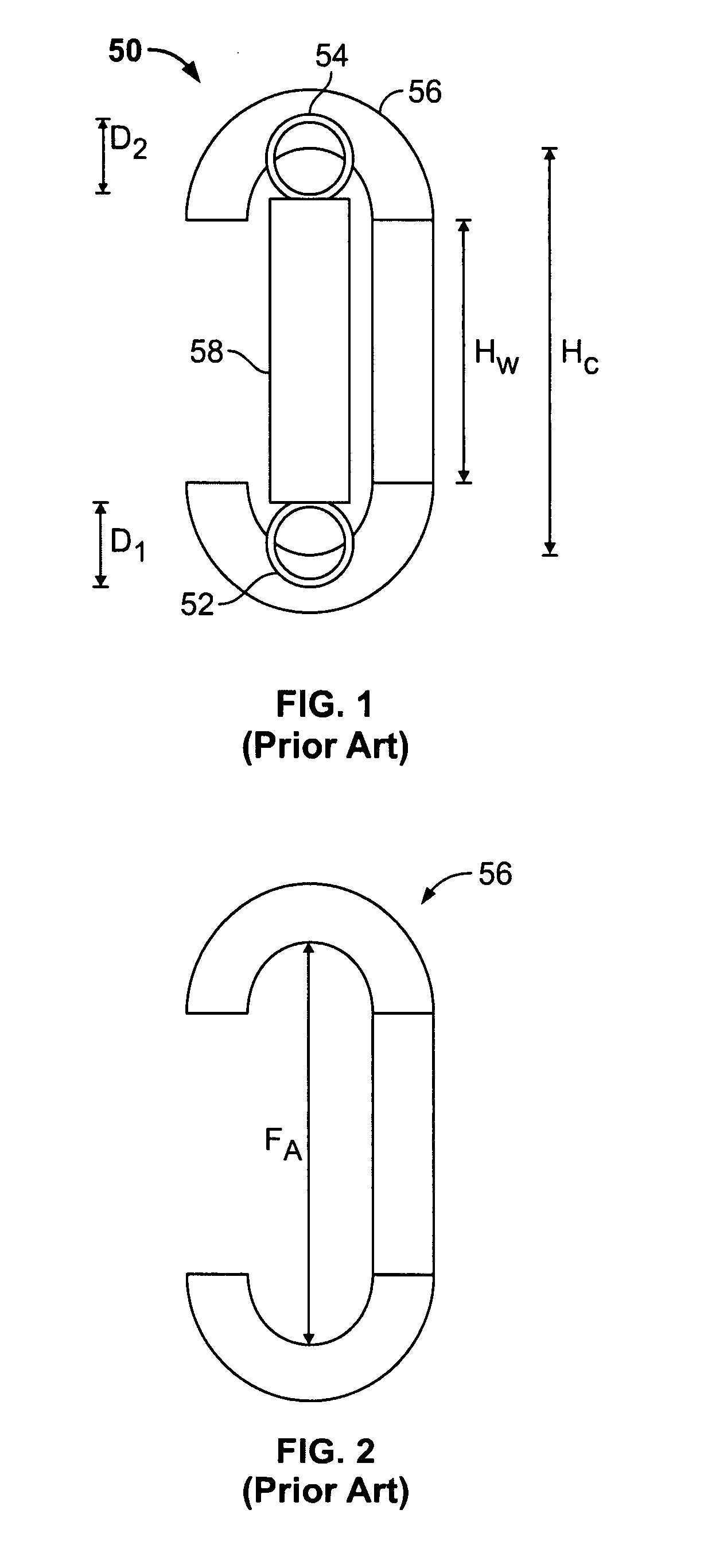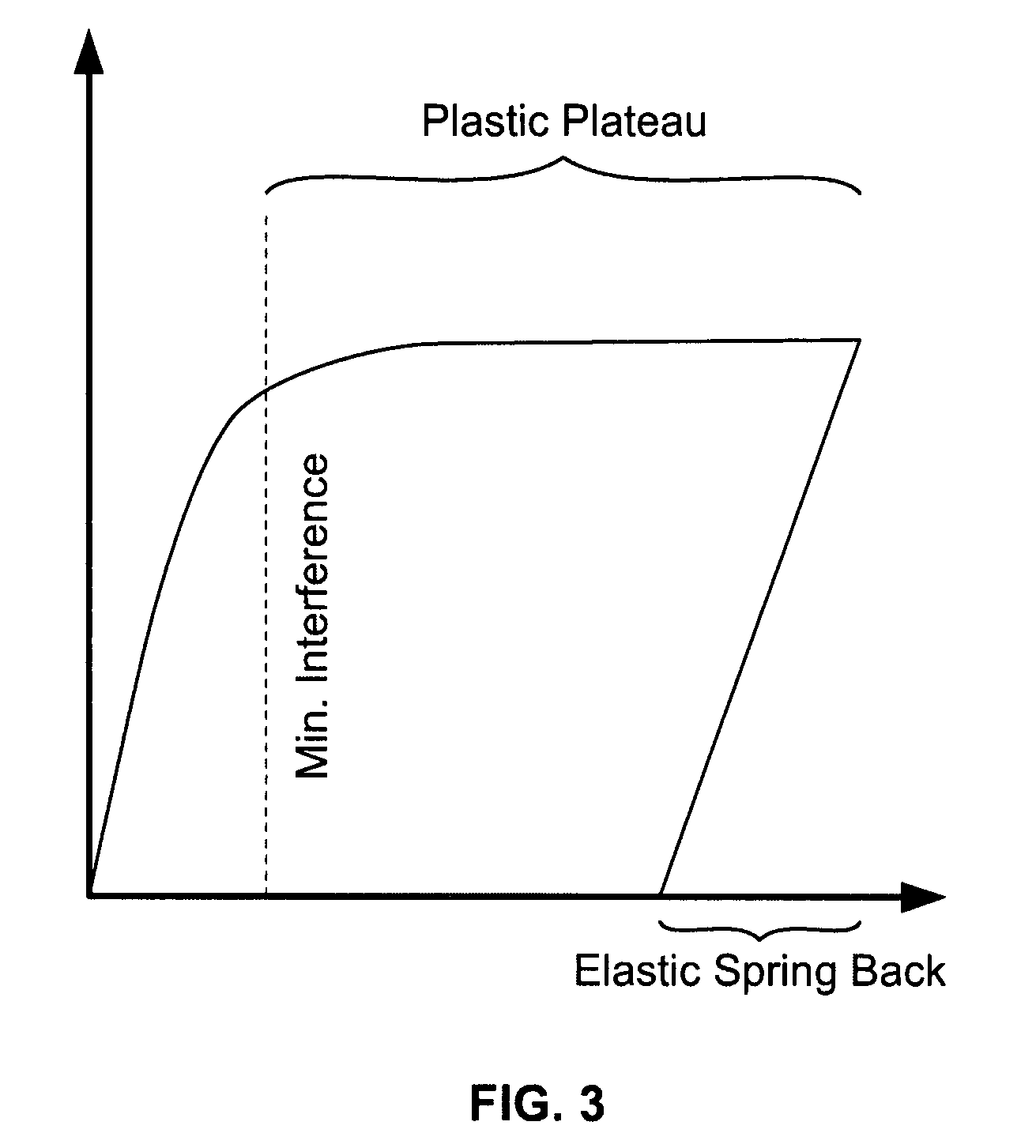Power utility connector with a plurality of conductor receiving channels
a technology of power utility connectors and receiving channels, which is applied in the field of electric connectors, can solve the problems of increasing the overall cost of the bolt-on connector system, more difficult installation, and poor installation, and achieve the effect of reducing costs
- Summary
- Abstract
- Description
- Claims
- Application Information
AI Technical Summary
Benefits of technology
Problems solved by technology
Method used
Image
Examples
Embodiment Construction
[0020]FIGS. 1 and 2 illustrate a known wedge connector assembly 50 for power utility applications wherein mechanical and electrical connections between a tap or distribution conductor 52 and a main power conductor 54 are to be established. The connector assembly 50 includes a C-shaped spring member 56 and a wedge member 58. The spring member 56 hooks over the main power conductor 54 and the tap conductor 52, and the wedge member 58 is driven through the spring member 56 to clamp the conductors 52, 54 between the ends of the wedge member 58 and the ends of the spring member 56.
[0021]The wedge member 58 may be installed with special tooling having for example, gunpowder packed cartridges, and as the wedge member 58 is forced into the spring member 56, the ends of the spring member 56 are deflected outwardly and away from one another via the applied force FA shown in FIG. 2. Typically, the wedge member 58 is fully driven to a final position wherein the rear end of the wedge member 58 i...
PUM
 Login to View More
Login to View More Abstract
Description
Claims
Application Information
 Login to View More
Login to View More - R&D
- Intellectual Property
- Life Sciences
- Materials
- Tech Scout
- Unparalleled Data Quality
- Higher Quality Content
- 60% Fewer Hallucinations
Browse by: Latest US Patents, China's latest patents, Technical Efficacy Thesaurus, Application Domain, Technology Topic, Popular Technical Reports.
© 2025 PatSnap. All rights reserved.Legal|Privacy policy|Modern Slavery Act Transparency Statement|Sitemap|About US| Contact US: help@patsnap.com



